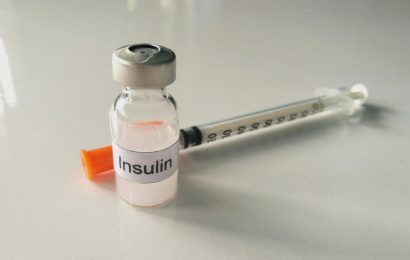Did you know that over 52% of people with diabetes also have arthritis? We reported on this finding in June 2008, but it still brings up questions such as: Why should this be? And what does it mean for people with one or both conditions? Does it tell us anything about treatment or self-management? Maybe it does.
Just as with diabetes, arthritis comes in two main types (and several less common ones). Like Type 1 diabetes, rheumatoid arthritis (RA) is an autoimmune disease. In RA, a person’s own white blood cells attack the lining of her joints. (Usually it’s a her — RA is two to three times more common in women.)
The other common form of arthritis is called osteoarthritis (OA). It is similar to Type 2 diabetes, in that it tends to come later in life. In the case of OA, this is because the joints wear down with age, just as insulin resistance tends to wear down the beta cells and cause Type 2.
Both arthritis and diabetes can cause similar symptoms. According to an Arthritis Foundation pamphlet, “diabetes causes musculoskeletal changes that lead to symptoms such as joint pain and stiffness, swelling… tight, thickened skin, trigger finger, carpal tunnel syndrome, painful shoulders, and severely affected feet.” So if you have both, it’s really a double whammy.
What’s the Connection?
According to the Centers for Disease Control and Prevention, people with OA and with Type 2 both tend to be less physically active. The CDC suggests that lack of movement is a major cause of both illnesses.
The common denominator in RA, OA, Type 1, and Type 2 is inflammation. The redness, heat, and pain you have in a foot or hand after an injury is caused by inflammation. Your body brings more blood to an injured or infected area and releases chemicals called cytokines that help healing.
Inflammation is supposed to last just a few days and then stop. Now imagine that hot, painful process going on throughout your body, or in your joints or in your pancreas. And not just for a few days, but for years. Can you see how it might cause problems? Inflammation contributes to beta cell destruction and insulin resistance, and it also damages joints. Treating inflammation with aspirin or similar drugs can improve glucose control and reduce insulin resistance.
The arthritis drug hydroxychloroquine (brand name Plaquenil) seems to lower blood glucose significantly, as does the RA treatment anakinra (Kineret). So there must be similar targets for these drugs, something similar about the conditions. (It’s interesting that Plaquenil was originally a drug for malaria. Might there be a connection there, too?)
What to Do?
Self-management of arthritis and diabetes have similarities, starting with exercise and stress reduction. Pain from arthritis can make exercise more difficult, though. Some ways to get moving are covered here and here. It’s important to treat your arthritis pain seriously, with medicines, hot and cold treatments, massage, rest, and creams or oils, so that you’ll be able to move.
Rest, relaxation, and healthy eating also help both diabetes and arthritis. Changing unrealistically negative thoughts is also known to help.
Be aware that if you use acetaminophen for pain, this could affect your blood glucose readings. It’s probably better to take a salicylate like aspirin instead. (Aspirin is not suitable for everyone, however, so be sure to check with your doctor before using this medicine.) If you are being treated by different doctors for your arthritis and diabetes, make sure they both know all the medicines you are taking. Some of the drugs for one condition could affect the other.
It can be really difficult to get moving and stay motivated when you have both diabetes and arthritis weighing you down. It can even be hard to get out of bed in the morning! If you have these twin conditions, what do you do to cope with them? Let us know. Many readers might benefit from your story.




